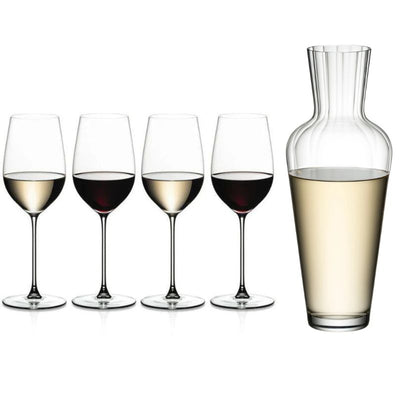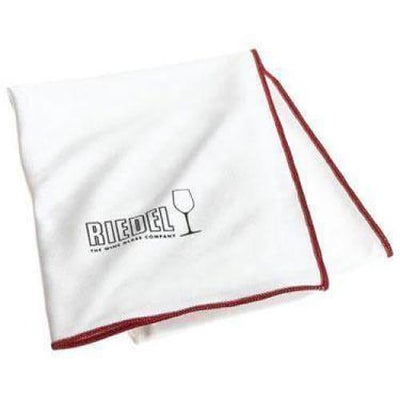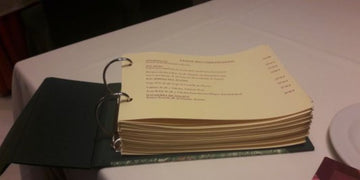Everything you need to know about Zinfandel

Celebrating World Zinfandel Day: America's Grape with a European Secret
You know how some things sneak into your life, under the radar, and then flip your expectations?
That's the story of Zinfandel.
America claimed it, toasted it, named it as its own. Then science showed up and said, "Actually …."
Turns out Zinfandel's roots trace back to Croatia, crept through Italy under the name Primitivo, and finally landed in California where it got dressed up as an American hero.
So, this Wednesday, 19 November (yes, it's World Zinfandel Day), let's raise a glass to a grape with wanderlust, great alongside ribs, ragù or whatever your heart desires.
Because Zinfandel doesn't just fly solo, it brings friends, and the bolder, the better.
In This Guide
- The Mystery Grape: Unravelling Zinfandel's Identity
- Understanding Regional Expressions
- The White Zinfandel Phenomenon
- A Tale of Two Styles: California vs Italy
- What's Happening Now: Innovation and Preservation
- Zinfandel's Versatile Place at the Table
- Climate Change: Challenges and Adaptations
- Why Zinfandel Matters
For decades, Zinfandel was considered America's native grape, a source of national pride for California winemakers. Then DNA testing in the 1990's revealed a twist worthy of a detective novel: Zinfandel was genetically identical to Primitivo from southern Italy, and both were descendants of Crljenak Kaštelanski, an ancient Croatian variety.
This revelation didn't diminish Zinfandel's importance though, if anything, it enriched the story, connecting California's wine heritage to centuries of European winemaking tradition.
🍇 Zinfandel's Range: Today's Zinfandel landscape is remarkably diverse. From the powerful, high-alcohol fruit bombs that made California famous, to elegant, restrained old-vine bottlings showing remarkable finesse, to Italy's earlier-ripening Primitivo's, and even Croatia's revival of the original Tribidrag.
Add to this the infamous White Zinfandel phenomenon, which, love it or hate it, introduced millions to wine, and you have a grape variety that's both proudly populist and capable of producing age-worthy wines of genuine distinction.
The Mystery Grape: Unravelling Zinfandel's True Identity
Zinfandel's journey to America remains somewhat mysterious, though most historians believe it arrived in the 1820's or 1830's, possibly through the Imperial Nursery in Vienna. By the 1850's Gold Rush era, it had become firmly established in California, thriving in the state's Mediterranean climate and proving remarkably adaptable to the conditions.
Zinfandel's backstory reads like a Netflix documentary waiting to happen.
For years the grape was "American through and through"… until the lab techs at UC Davis found themselves sleuthing through vineyards on the Dalmatian coast.
Enter Crljenak Kaštelanski, a grape whose name you can only pronounce after practising in the mirror or having two glasses, at which point it rolls off the tongue beautifully.
This near-forgotten Croatian variety turned out to be Zinfandel's long-lost twin.
I love the idea of a grape that left Europe to "seek its fortune", became a star in California, and then decades later someone goes, "Hang on, haven't we met before…?"
|
|
This genetic detective story doesn't diminish California's claim to Zinfandel, quite the opposite. While the grape may have originated elsewhere, it was California that truly understood its potential, developed its personality, and created the styles we recognise today. Much like how Malbec found its true expression in Argentina despite French origins, Zinfandel became quintessentially Californian through terroir and winemaking philosophy. |
🔬 The Quirky Grape: The grape itself presents interesting challenges. Zinfandel ripens unevenly within the same cluster, meaning you'll often find shrivelled, raisined berries alongside underripe fruit. It's the teenager of the grape world. One has done all its homework and tidied its room, the next is still in bed… asleep.
This quirk has led to the characteristic jammy-yet-fresh profile that defines many Zinfandels, though it requires careful vineyard management and harvest timing decisions.
Understanding Zinfandel's Regional Expressions
Zinfandel's personality shifts dramatically by region.
Dry Creek Valley (California)
Produces the archetype: powerful yet elegant wines with serious aging potential, exemplified by Ridge Vineyards' Lytton Springs.
Paso Robles (California)
Delivers bold, fruit-forward exuberance with generous alcohol and jammy ripeness.
Amador County (California)
Harbours some of the state's oldest vines, many from the 1800's, producing intensely concentrated wines with volcanic mineral complexity.
Sonoma County (California)
Offers the widest range, from Russian River Valley's structured elegance to classically bold mountain fruit expressions.
Puglia (Italy)
Takes a different path: Primitivo's earlier harvest yields softer tannins, lower alcohol, and Mediterranean herb notes, more straightforward but characterful and excellent value.
Dalmatia (Croatia)
Reviving ancient Tribidrag vineyards, crafting restrained wines with higher acidity and savoury complexity that hint at the grape's pre-California character.
The White Zinfandel Phenomenon: Understanding the Pink Elephant
No discussion of Zinfandel is complete without addressing White Zinfandel, the sweetish, pink wine that became America's bestselling wine in the 1980's and 90's. Created accidentally by Sutter Home in 1975 when a stuck fermentation left residual sugar in a rosé-style Zinfandel, it became a cultural phenomenon.
Wine enthusiasts often dismiss White Zinfandel as overly sweet and simplistic. Yet its importance cannot be understated, it introduced countless people to wine who might otherwise have found dry wines too challenging. For many, that bottle of White Zin at a summer barbecue was the gateway to a lifelong appreciation of wine.
🌱 The Unexpected Benefit: The commercial success of White Zinfandel also had an unexpected benefit: it kept many old Zinfandel vineyards economically viable during periods when red Zinfandel struggled in the marketplace. Some of California's most prized old vines survived precisely because they could be used for White Zinfandel production.
Today, while White Zinfandel's popularity has waned, its legacy remains. It proved that wine didn't need to be serious or complex to bring joy, and that accessibility isn't something to be ashamed of in the wine world.
A Tale of Two Styles: Comparing California and Italian Approaches
The same grape, two philosophies:
California Zinfandel
Bold and ripe: 14-17% alcohol, late October harvests, 12-18 months in American oak. Expect blackberry jam, black pepper, vanilla, chocolate, full body, and powerful tannins.
Italian Primitivo
Restrained and fresh: 12.5-14.5% alcohol, earlier August-September harvests, shorter oak aging. Think red cherry, plum, Mediterranean herbs, softer tannins, brighter acidity.
California embraces ripeness and power, creating statement wines for bold, grilled flavours. Italy favours earlier picking and lighter extraction, producing versatile table wines for extended meals. Neither approach is superior, they simply serve different purposes and palates.
What's Happening Now: Innovation and Preservation
Here's where things get exciting. A new generation of winemakers is shaking up what Zinfandel can be:
Saving the Old Guard
Those gnarled, ancient vines, some planted over 150 years ago, represent irreplaceable genetic diversity. Organisations like the Historic Vineyard Society are racing to document and protect them before they're lost to development or replanting. These old-timers produce tiny yields of extraordinarily characterful fruit that no young vine can match.
Field Blend Revival
Winemakers are rediscovering the old California practice of interplanting multiple varieties in the same vineyard. These mixed blocks might include splashes of Petite Sirah, Carignane, or Alicante Bouschet, producing wines of unexpected complexity.
Whole-Cluster Fermentation
Some producers are adding stems back into fermentation for structure and aromatics, challenging the fruit-bomb stereotype.
Going Higher
As temperatures rise, savvy growers are planting at higher elevations to maintain the acidity that keeps Zinfandel balanced.
Croatian Connection
Modern winemaking is being applied to ancient Tribidrag vineyards, creating wines that bridge Old and New World styles and connect Zinfandel to its roots.
 Zinfandel's Versatile Place at the Table
Zinfandel's Versatile Place at the Table
Zinfandel's bold personality makes it surprisingly food-friendly, particularly with robust, flavourful dishes that would overwhelm more delicate wines.
Classic California Pairings
Powerful California Zinfandels shine alongside:
- Barbecue: From Kansas City ribs to Texas beef, Zinfandel's sweetness and structure stand up to smoky, sauce-laden meats
- Grilled meats: Burgers, steaks, and lamb chops with charred edges find a perfect partner in bold Zin
- Spicy cuisines: The slight sweetness and fruit-forward nature help tame heat in spicy Thai, Indian, or Mexican dishes
- Strong cheeses: Aged cheddar, smoked Gouda, or blue cheese create compelling contrasts
Primitivo: Mediterranean Soul
Italian Primitivo pairs beautifully with:
- Pasta with meat sauces: Bolognese, ragù, or sausage-based sauces
- Pizza: Especially with cured meats, mushrooms, or rich tomato bases
- Grilled vegetables: Aubergines, courgettes, and peppers with olive oil and herbs
- Rustic stews: Hearty bean dishes, wild boar, or osso buco
- Basically: It's Italian, so eat Italian!
Old-Vine Zinfandels: Elevated Dining
The more elegant, structured old-vine wines deserve considered pairings:
- Duck: Whether roasted, confit, or in cassoulet, the richness works beautifully
- Game meats: Venison, wild boar, or rabbit preparations
- Mushroom dishes: Especially porcini or other earthy varieties
- Slow-cooked meats: The wine's structure complements rich, braised preparations
The Versatility of White Zinfandel
Don't overlook the pink sibling for casual occasions:
- Spicy Asian takeaway: The sweetness tames heat better than many wines
- Picnic fare: Cold chicken, fruit, and cheese plates
- Brunch dishes: Surprisingly good with quiche or eggs Benedict
As sommelier and winemaker Rajat Parr notes: "What makes Zinfandel exceptional for American cuisine is that it was essentially born here. It understands our food culture, bold, generous, unafraid of flavour, in a way that few other varieties can match."
The pairing key? Embrace Zinfandel's personality rather than fighting it. Match bold wines with equally strong flavours, but don't overlook how brighter acidity and fruit can freshen the palate between rich bites.
Climate Change: Challenges and Adaptations
Rising temperatures threaten Zinfandel's balance, pushing an already ripe variety toward over-ripeness, excessive alcohol, and lost freshness. Harvest dates have crept earlier, some producers now pick in late August rather than the traditional September or October, preserving acidity but potentially sacrificing complexity.
Producers are adapting: moving to cooler sites and higher elevations, experimenting with shade-providing trellising, and adjusting irrigation strategies. Ironically, marginal regions once too cool are now producing Zinfandels with fresh elegance that challenges the traditional California model.
Looking Forward
Sustainable viticulture is becoming standard practice. Producers like Limerick Lane and Bedrock Wine Co. prove that caring for the land and making brilliant wine aren't contradictory, they're building climate resilience.
Meanwhile, younger winemakers favour elegance over power, complexity over simple fruit, letting specific vineyard sites speak rather than creating generic blends. UC Davis research continues on clonal selection, rootstock matching, and viticultural practices to help Zinfandel adapt while preserving its distinctive character.
Why Zinfandel Matters
Karen MacNeil, author of The Wine Bible, puts it well: "Zinfandel is California's gift to the wine world, a variety that could have been just another Italian import but instead became something uniquely American, bold and generous in spirit, capable of both everyday pleasure and profound complexity."
And what did Eric Asimov write in The New York Times?
"The best Zinfandels manage something remarkable, they're simultaneously hedonistic and cerebral, immediate and age-worthy, democratic and distinctive. It's a combination few grape varieties can pull off."
So, this World Zinfandel Day, whether you're opening a Dry Creek Valley old-vine bottle, a Primitivo from Puglia, or even rediscovering White Zinfandel without guilt, remember you're drinking a grape with genuine range.
From Croatian hillsides to Gold Rush vineyards, from backyard barbecues to collector's cellars, Zinfandel proved that a grape can be both proudly local and unashamedly international.
Zinfandel reminds us that identity, like great wine, is never static, it's the sum of every place we've called home.
Here's to Zinfandel, California's accidental masterpiece.






 Gnarled old Californian Zinfandel vines can be up to 100 years old
Gnarled old Californian Zinfandel vines can be up to 100 years old















Leave a comment